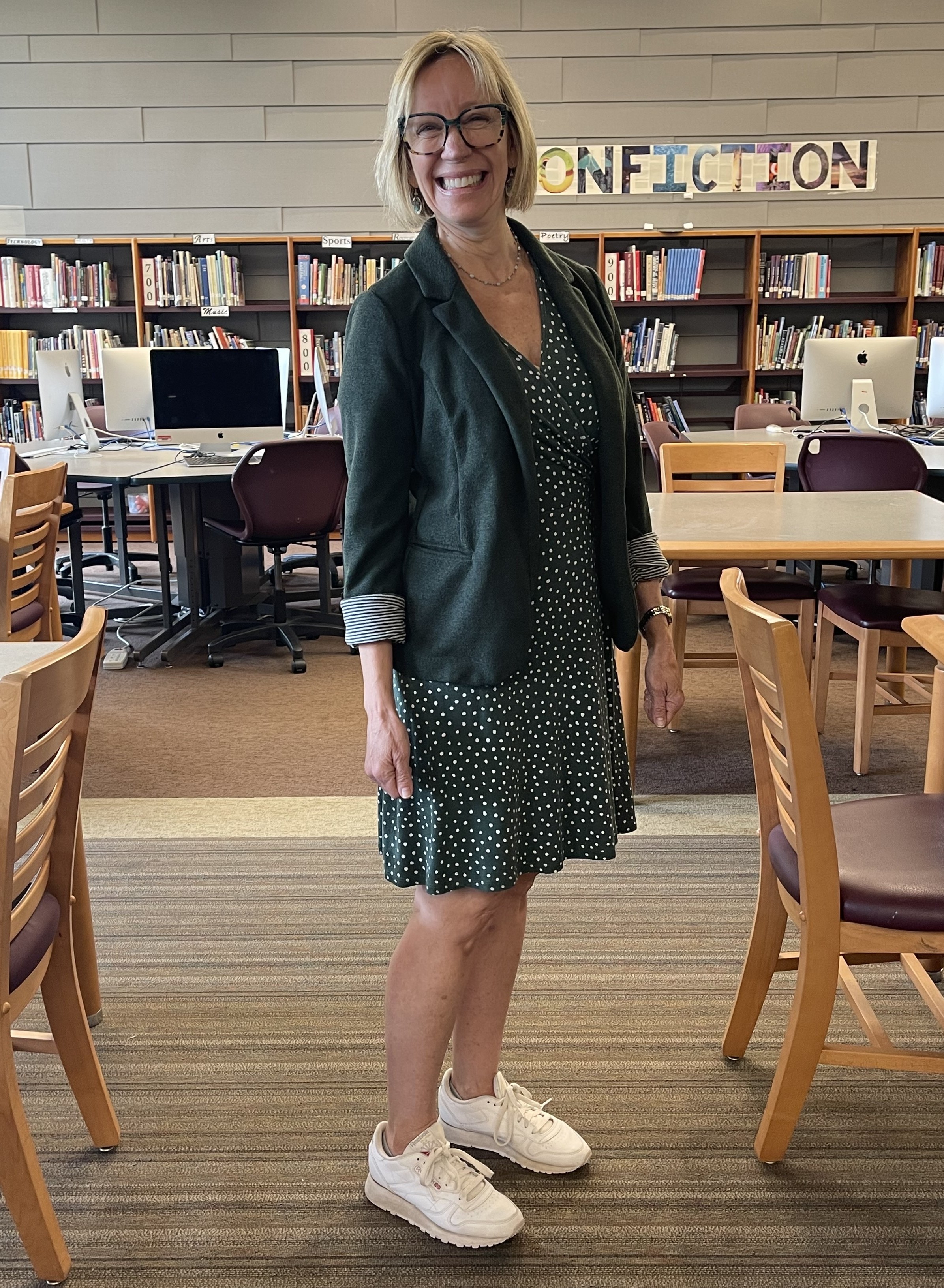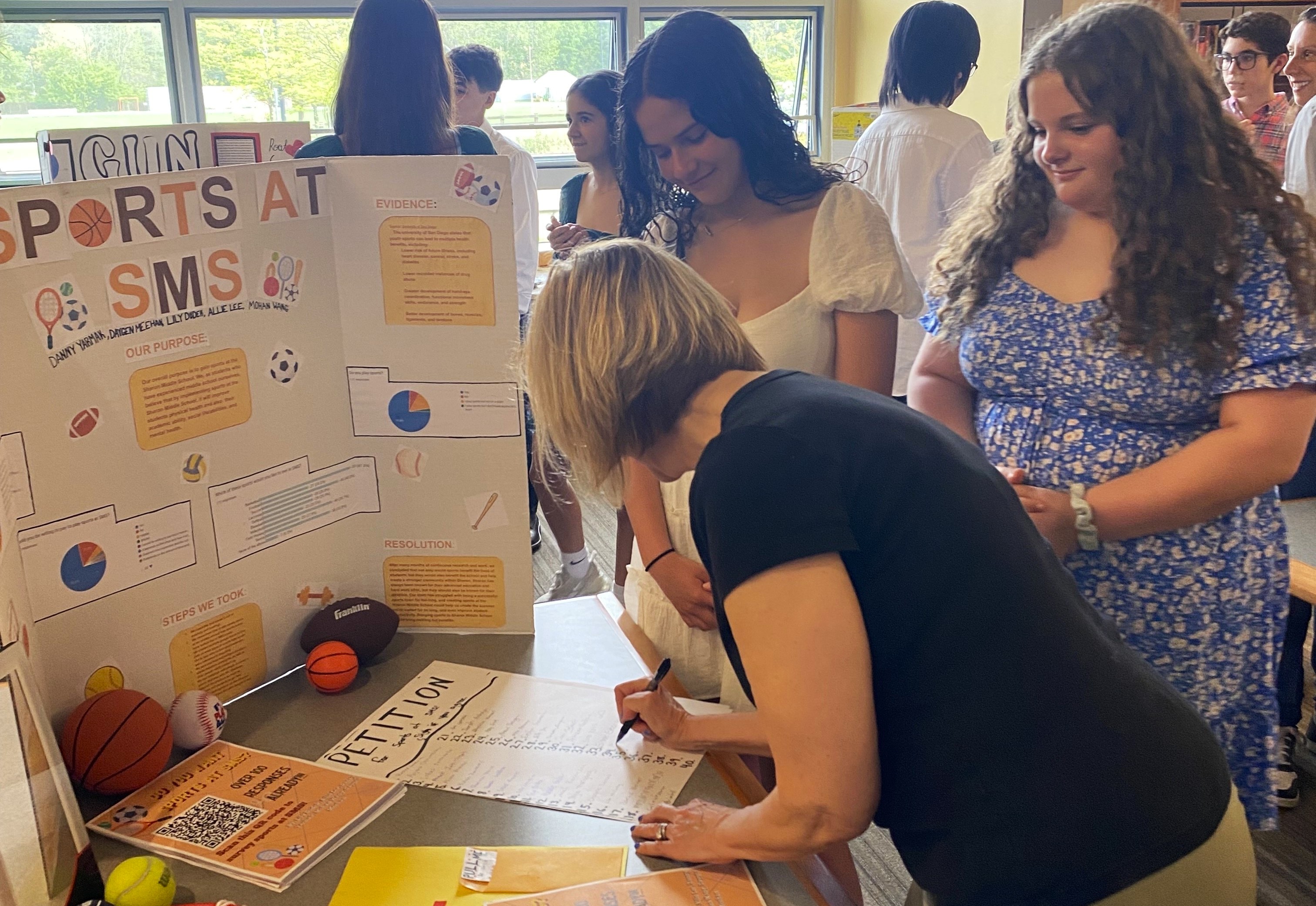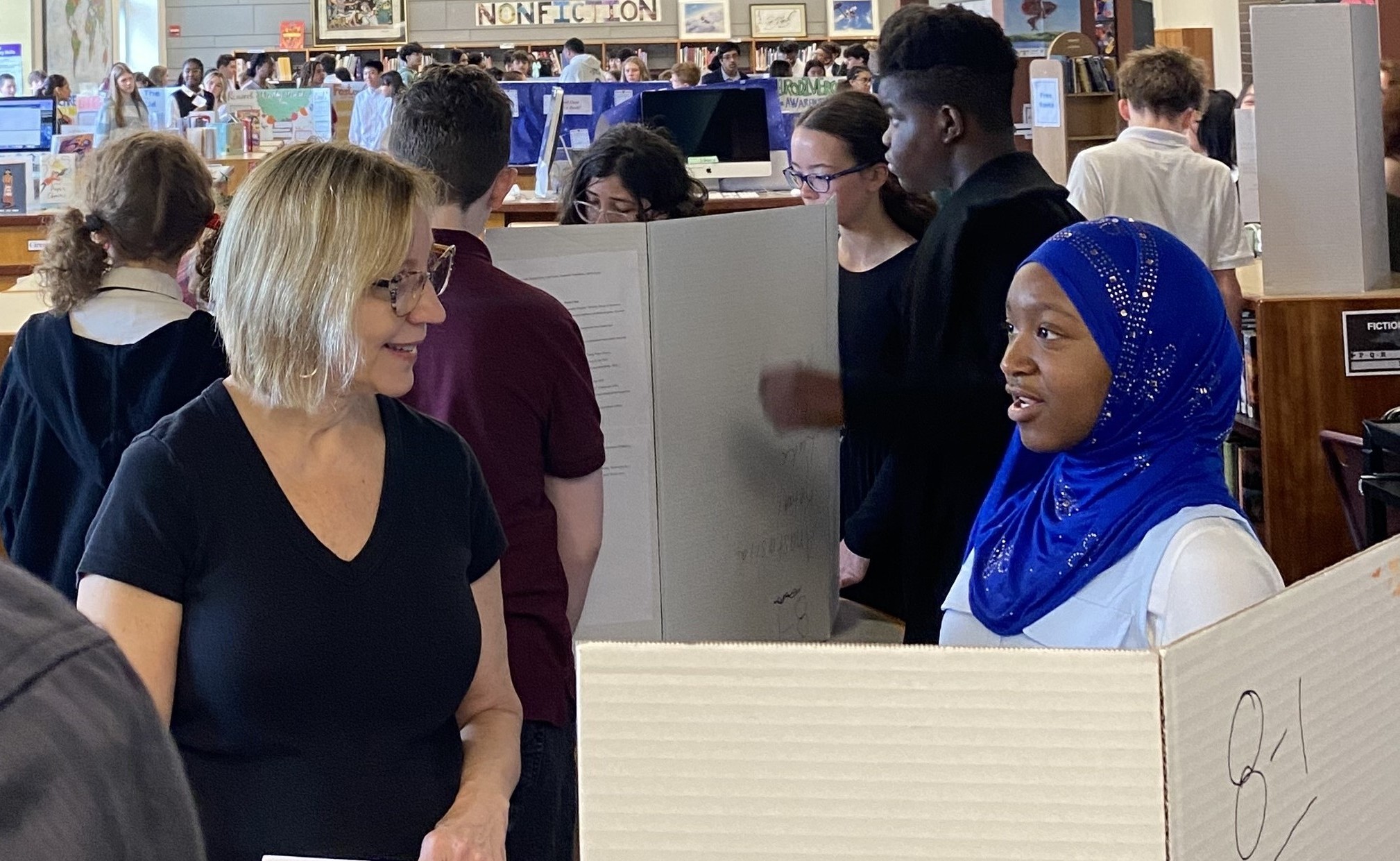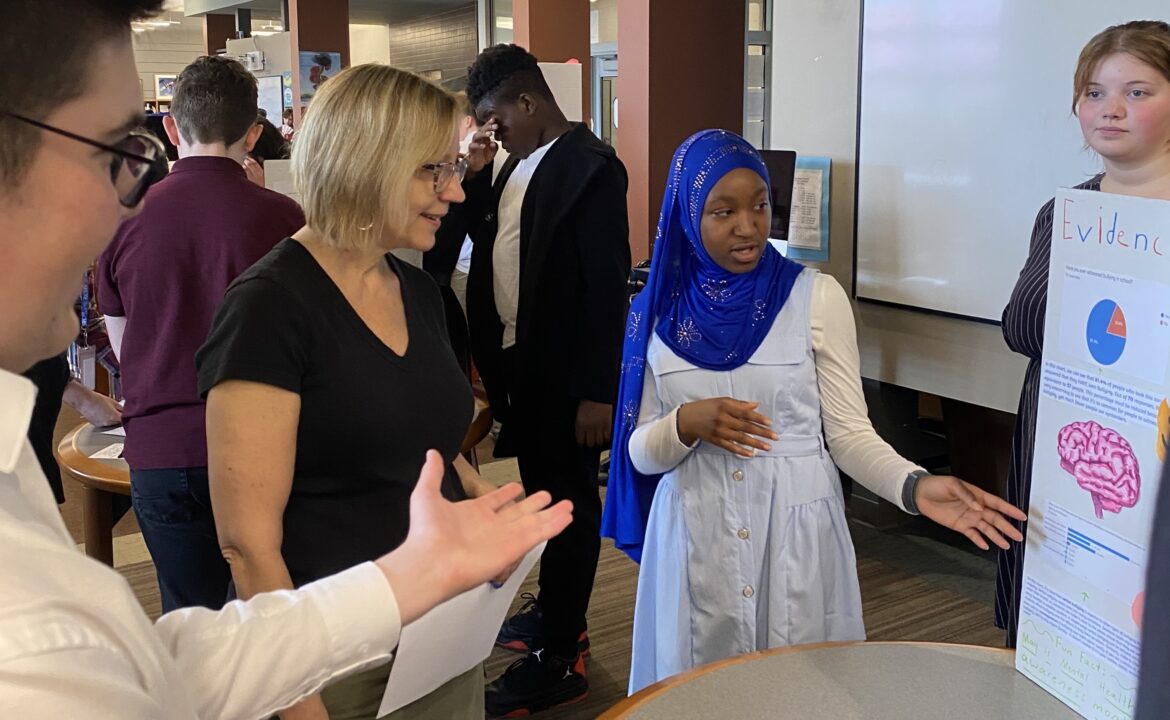“There’s a very strong component of leadership being a library media specialist,” says Cathy Collins, Library Media Specialist at Sharon Public Schools in Massachusetts. “We pilot new technology and studies show student improvement in academic test scores and college admissions due to the role. We’re just leaders by nature of what we do. And yet there’s not always a lot of recognition for the field.”
Too often, library media specialists are underutilized and underappreciated. A misconception they are merely babysitters or simply play a role in the entertainment side of literacy leaves a lot of quality tech expertise and opportunity for student success on the table.
“We are trained to work with teachers across subject areas and grade levels, full classes or individual students. If you have a big project that involves research, we want to jump in. I want administrators to support the work we are doing. Whether you’re a principal or a tech coach or department head, involve your library media specialist in your department meetings and curriculum planning, because they have a wealth of knowledge about not only research, but technology and how to best integrate it.”
Collins was recently recognized for her work with an Innovative Leader Award for Library Media Specialist Award at the Tech & Learning New England Regional Leadership Summit.
Collins shares how tech plays a role for Library Media Specialists, offering tips for administrators and educators to make the most of the role’s expertise to benefit their students.
Truth is the Treasure

The current climate and flood of misinformation on social and in media makes becoming a good digital citizen more important than ever.
“I cover cybersecurity, online safety, and being a responsible user of technology integrating ISTE’s digital citizenship lessons, but take it a step beyond,” says Collins. “Right now, my students are creating a digital footprint map—a mind map of their most visited websites, favorite apps, and social media use. This helps them become more aware of their activity online.”
Once students have a handle on how they are interacting with media, Collins shifts to the quality of that media.
“I teach news and media literacy, using the News Literacy Project’s checkology Curriculum,” she says. “We cover things like free speech, the seven standards of journalism, and how to be smart in evaluating information. I teach them about algorithms and to be aware of things like filter bubbles and information pollution, as well as the importance of digital verification when doing research online.”
With political sensitivity on high alert, some of these areas can pose a tricky tightrope to walk for educators.
“It’s a bipartisan topic, it crosses political lines,” Collins says. “One of the lessons I do is all about understanding bias. We all carry biases. It’s simply about determining whether a piece of information that they’re looking at online is factual. Who’s the author? How do we determine how credible this is? What’s their experience level? Your Uncle Charlie might be your favorite uncle and he might know all there is to know about fishing. However, if he doesn’t know anything about physics and your question has to do with physics, then even though you love him, you need to go beyond Uncle Charlie.”
Collin’s debut book, Teaching News Literacy in the Age of AI: A Cross Curricular Approach, will be published by ISTE in August. Aimed at educators and library media specialists, the cross-disciplinary approach offers resources to help students navigate today’s news and media landscape as expert chroniclers, curators, and content creators.
“Be a Sherlock Holmes or an Enola Holmes, be a Spock,” she says. “It’s black and white, take your own biases and emotions out of it and just look at the facts. It’s vitally important. Truth is the treasure. I tell them they are the treasure hunters and their critical thinking skills are their treasure map.”
Project-Based Pizazz

“I’m a firm believer in project-based learning,” Collins says. “We do a lot of cross-curricular projects that involve research, creativity, and the use of technology in the creation process and the expression piece as well.”
Collins’ special projects include coding with poetry from Hour of Code and creating an ideal future sustainable home using 3D-design software through Ludenso Create. She also focuses on popular projects aimed at English language learners, such as a digital music creation with Soundation and drawing projects using Brush Ninja to create a meme, which allows students to communicate in a comfortable non-written form.
“They are still doing research, technology just allows them to get creative about how they’re expressing their ideas, which is wonderful,” she says. “My annual session on how to use Sora to gain access to multiple different languages to read and hear their books in their own language as they’re developing their English skills draws a full house.”
With much of the news and current events seeming dire and full of doom and gloom, Collins injects a dose of humor to ensure lessons resonate.
“I’ll have a little quiz on AI–there’s hilarious things out there,” she says. “We look at images and I teach them the strategies of how to find the source and whether it’s reliable or not. I’ll show a photo of the Pope in a puffer jacket, that’s not real. So we learn things like reverse image searching to backtrack and find the original source of a photo. The Wayback Machine helps you check down a website where something came from originally. I remember when it was just a newspaper that was thrown on your porch. Now it’s a lot harder with the internet, social media and speed with which the misinformation travels. So I let them play with the technology that the bad actors are using.”
AI offers the potential for an enormous effect on today’s world, yet Collins reminds students that it is just a tool, and one that can be used for good or bad.
“I will have students locate a historical photo and use Canva,” she says. “Students upload a historical photo. alter it and then we have a guessing game. What is different in this picture, which is real, which is not? It shows not tells, just how easy it is to use certain tools. Letting them use the tech is the best way I can think of to teach an awareness of what’s going on right now in the world of AI.”

Collins shares what you can do to ensure your media specialists are contributing all they can to your school.
- Prioritize Collaboration and Communication. Schedule regular meetings to discuss school needs. Involve librarians in curriculum planning and showcase the library’s resources, services and tech to students.
- Advocate for the Librarian’s Role. Promote the librarian’s role in curriculum and tech integration, share access to professional resources such as relevant professional organizations and conferences, and promote teacher-librarian partnerships.
- Allocate Resources and Support. Ensure adequate funding for materials, tech, collaboration time, and PD. Publicly acknowledge librarians’ contributions.
- Professional Development and Growth. Provide opportunities for librarians to enhance skills and knowledge, support research and innovative practices, and offer librarian-to-librarian mentorship and coaching from pros.
- Data-Driven Decision-Making. Use library data to inform resource allocation and measure the positive impact of library programs and services on student outcomes.
- diffit.me
- Canva
- Brisk
- MagicSchool AI
- StretchAI
- Safari Montage
- Breakout EDU
- Adobe Express
- Brush Ninja
- Soundation
- Ludenso Create
- Hour of Code
- Checkology curriculum (News Literacy Project)
- ISTE Digital Citizenship curriculum
- Sora
- National Geographic
- Noodletools
- Code.org


